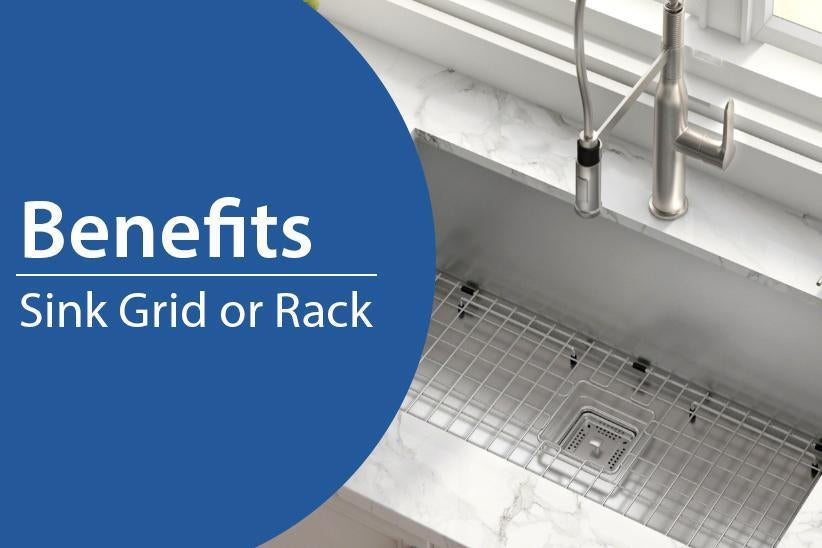
Benefits of a Kitchen Sink Grid
What is a sink grid/rack & why do I need it?
The bottom grid/rack is perhaps the best-known sink accessory. It sits on the bottom of the sink on non-skid protective feet, allowing water to drain below dishes. It keeps the bottom of the sink from scratching, but many people rinse produce on it as well.
90% of kitchen sinks now have durable grids/racks that are custom designed to fit your exact sink and it's unique shape. A bottom sink grid can also be mistakenly referred to as a sink tray, strainer, shelf, drainer, mat, and even sink protector. But, no matter what you call it, it comes with a whole host of benefits, including:
- reducing the amount of wear and tear to your sink's surface
- reducing sound while in use
- improved draining
- aids in vegetable cleaning
- and it adds a custom look to your sink.
When shopping for a sink, it's important to understand all of the available components. Now, today many manufacturer's are now 'packaging' their sinks. Meaning, when you purchase the sink the bottom grid, basket strainer and sometimes even more is included with the sink. While other manufacturers still require you to purchase the available components separately. It is important to know what components ARE available. Because there are sink models out there they do not even have corresponding grids available AT ALL! So, it if IS important to you to have a bottom sink grid (which we here at DirectSinks believe it is), you will most likely want to find a different sink to purchase.
What should you look for in a sink grid?
- You should have a sink grid that is made of the same high quality stainless steel as your sink. Most residential use stainless steel is 304 stainless.
- If you're going to be investing in a stainless steel grid, make sure that it fits your sink! Now if you know your sink model, chances are the manufacturer has a corresponding bottom grid for it. However, if you do not know your sink model or a grid is not made for it, you'll want to find one that leaves an even space around the edge of the grid and the sink. And the drain opening should line up with your drain hole (this way you can easily remove your basket strainer to clean it).
- Check out the welds on the grid, especially where they intersect. If the weld is rough, it may trap particles of food, bacterial or dirt.
- Notate the use of rubber/plastic legs and bumpers on the grid. These are often black (but can be clear or white, depending on the manufacturer) that act as a rubbing barrier between the sink and the grid. DirectSinks TIP: clear plastic feet show black and discolored build up after a while. If this is a highly used sink, you may want to opt for black legs & bumpers, if you can!



- Avoid grids that have plastic coatings on them. This may not be obvious in images, because it is a clear coating. This coating will NOT hold up, especially against boiling water and hot pots and pans.
Another DirectSinks TIP: If your bottom grid is stainless steel, and relatively small, you may even be able to pop it into the dishwasher for a good cleaning! But remember to remove the rubber/plastic feet and bumpers before doing so. They will melt :(




